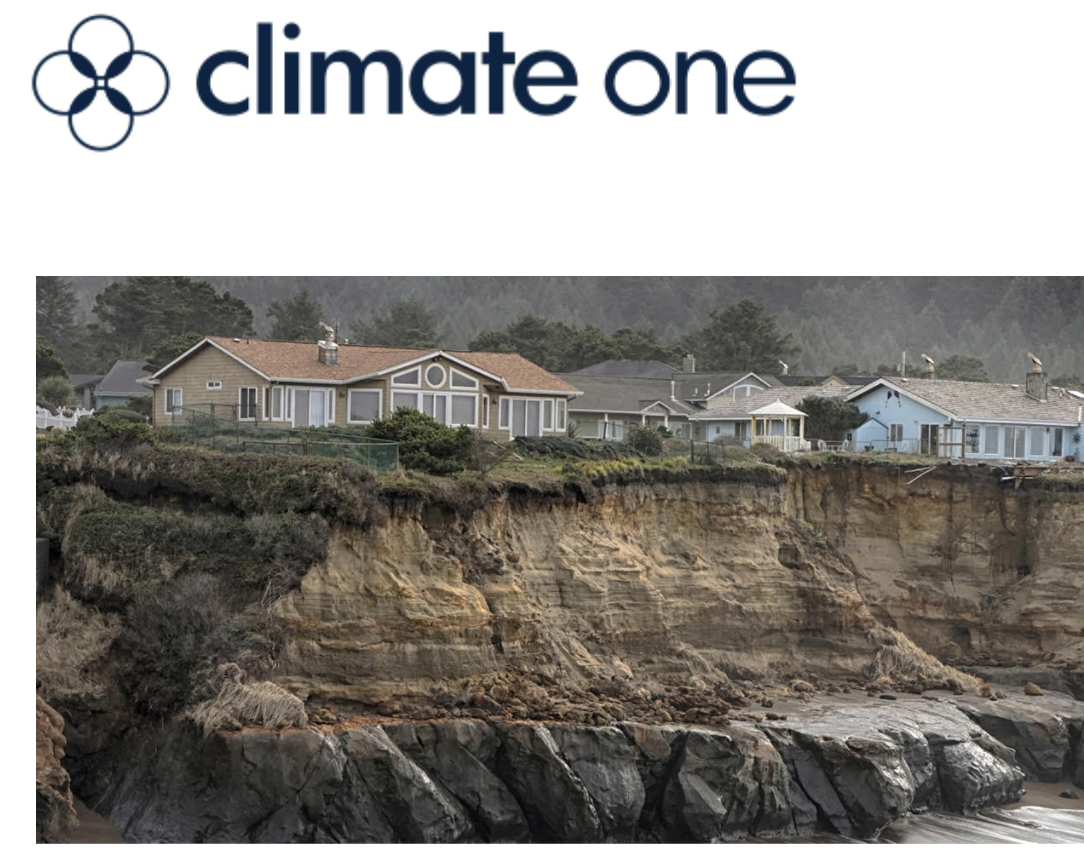Climate One: When it comes to rising seas and other climate threats, how do we figure out when to stay and when to go?
The concept of managed retreat – essentially abandoning homes or towns – is unpopular, but it’s gaining momentum, particularly in places facing increased climate disruption such as floods and wildfire.
Southeast Virginia currently experiences the fastest rate of sea level rise on the Atlantic coast. And that’s only projected to accelerate over the next several decades – to the point where neighborhoods could be lost to flooding.
As Sam Turken reports, the common response to the rising waters in Southeast Virginia has been to elevate homes, install flood pumps, and heighten sea walls. But in some cases, cities are already telling the sea, “Hey, you can have this land.” Turken covered the complexities of voluntary buyout programs and the equity issues they raise in a series for WHRO in Norfolk, Virginia, funded by the Pulitzer Center as part of their Connected Coastlines Reporting Initiative.
Turken reports that local governments have limited funding to put toward buyouts, and even with growing flooding risks, many people are reluctant to take the offers.
“People love their neighborhoods, and even if you may be trying to help them and get them out of harm’s way, you’re stripping them from something that is really part of their heart,” Turken says. He says you also have to consider where people go if they take a buyout, at a time when housing is in short supply and prices are on the rise.
“Unless we build more affordable housing in the decades to come to prepare for something like this – affordable housing in safe areas – we’re gonna have a lot of people who, even if they’re leaving, they’re stranded, because they have nowhere else to go.”
Insurance and reinsurance companies were among the earliest corporations to ring the alarm on climate. They know the damage and risk numbers better than anyone else. Kia Javanmardian is a senior partner at McKinsey & Company where his focus includes advising insurance companies on climate risk.
He says while insurance companies typically have the ability to reprice every year, some have moved away from certain markets entirely, driving up prices. He says that’s one factor to consider as climate disruption accelerates.
“There are just some places where, despite what you build a building from, how high you put it above the ground, it still might not make sense to actually be building there,” Javanmardian says.
While some places look to retreat, other cities are doubling down, with investments in more resilient and flexible design. Amy Chester is managing director of Rebuild By Design, a firm working to help cities and communities build climate resilience.
During Hurricane Sandy in 2012, the southern tip of Manhattan was without power, shutting down the New York Stock Exchange and causing patients to be evacuated from hospitals. Chester says Sandy revealed that more needed to be done to respond to and plan for future climate threats. \
“Since Hurricane Sandy we’ve been focused on our shorelines to ensure that when we have three to six feet of sea level rise in New York City and increased storms, that the storm surge doesn’t wipe away communities. What Hurricane Ida showed us is that every single community in New York City is vulnerable,” she says.
Chester says investments in climate resilience have to include community involvement and a focus on equity to serve their communities in the best way possible. And there’s no time to waste.
“Communities are suffering and we all collectively have a responsibility to do something about it,” she says. “We’re gonna have to decide together: which are the neighborhoods that we want to fortify and where are the neighborhoods that we want to retreat? And if we retreat, where are our community members gonna go, and how do we ensure that when community members move upland that they’re not further gentrifying communities?” Listen here>>

